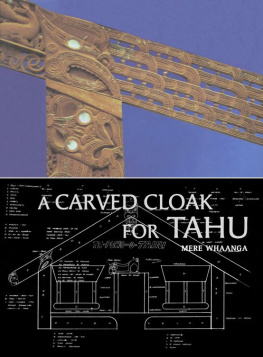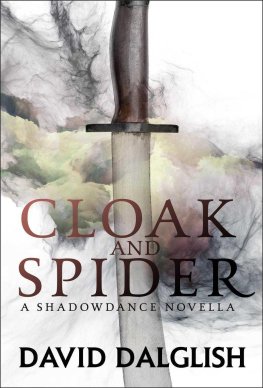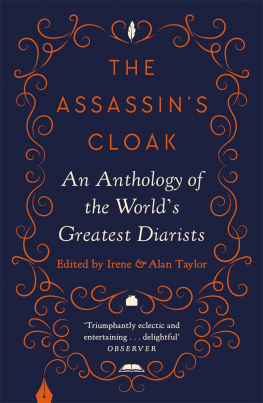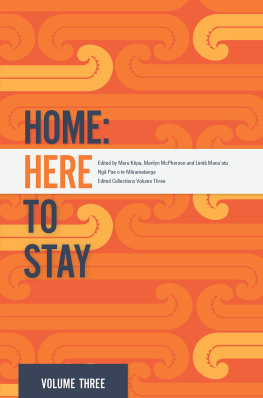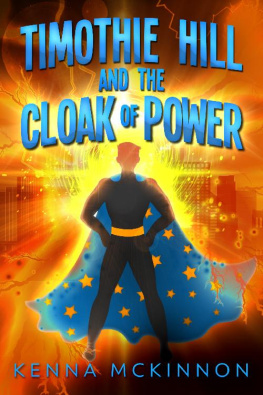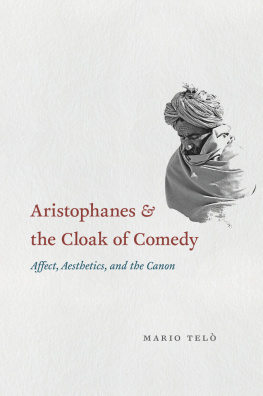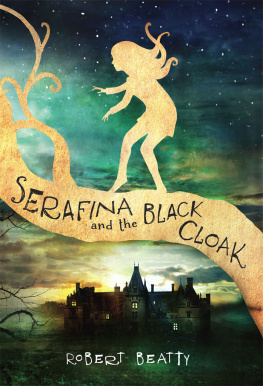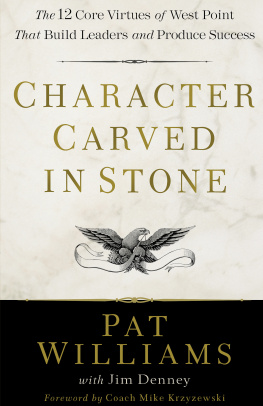Mere Whaanga - A Carved Cloak for Tahu
Here you can read online Mere Whaanga - A Carved Cloak for Tahu full text of the book (entire story) in english for free. Download pdf and epub, get meaning, cover and reviews about this ebook. year: 2012, publisher: Auckland University Press, genre: Home and family. Description of the work, (preface) as well as reviews are available. Best literature library LitArk.com created for fans of good reading and offers a wide selection of genres:
Romance novel
Science fiction
Adventure
Detective
Science
History
Home and family
Prose
Art
Politics
Computer
Non-fiction
Religion
Business
Children
Humor
Choose a favorite category and find really read worthwhile books. Enjoy immersion in the world of imagination, feel the emotions of the characters or learn something new for yourself, make an fascinating discovery.
- Book:A Carved Cloak for Tahu
- Author:
- Publisher:Auckland University Press
- Genre:
- Year:2012
- Rating:3 / 5
- Favourites:Add to favourites
- Your mark:
- 60
- 1
- 2
- 3
- 4
- 5
A Carved Cloak for Tahu: summary, description and annotation
We offer to read an annotation, description, summary or preface (depends on what the author of the book "A Carved Cloak for Tahu" wrote himself). If you haven't found the necessary information about the book — write in the comments, we will try to find it.
A Carved Cloak for Tahu — read online for free the complete book (whole text) full work
Below is the text of the book, divided by pages. System saving the place of the last page read, allows you to conveniently read the book "A Carved Cloak for Tahu" online for free, without having to search again every time where you left off. Put a bookmark, and you can go to the page where you finished reading at any time.
Font size:
Interval:
Bookmark:

The idea for this book first arose in 1990, when the kaumatua of Iwitea marae asked me to write our history. The framework is provided by the whakairo of Te Poho O Tahu.
It was from those whakairo that the title A Carved Cloak for Tahu came. When Te Hore Epanaia Whaanga spoke to the people of Iwitea in the 1980s about carvings for Te Poho O Tahu, not everyone agreed. One kuia in particular was opposed because the earlier Te Poho O Tahu had not had carvings, and the current one had only kwhaiwhai on the maihi. Whaangas answer was that it was time the old chief had a cloak.
Taka Panere, then based at Takitimu marae in Wairoa, was the master carver who began the work. However, he left the area before the carvings were completed, and Whaanga and Lim Robinson picked them up and took them to Iwitea. The only place large enough to hold them was the dining room, where the carvings were stored under cover for almost three years. Whaanga died in May 1986. In late 1988, following the launch of the book TheLegendoftheSevenWhalesofNgaiTahuMatawhaiti, the people of Iwitea decided to complete the carving project. The grandson of Arapera Kumeroa (Whaangas sister) had been taught to carve by Panere. Paratene (Broughton) Johnson moved back to Wairoa, and the Iwitea marae committee, trustees and kaumatua organised a carving module under the Maccess scheme. Johnson headed a group of young local men who completed the whakairo in 1989.
We tell our important stories through various art forms. This book brings together some of those arts that members of Ngai Tahu Matawhaiti
and otners of the hap of Iwitea have used to tell our history and declare our identity whakairo, waiata, and the written story.
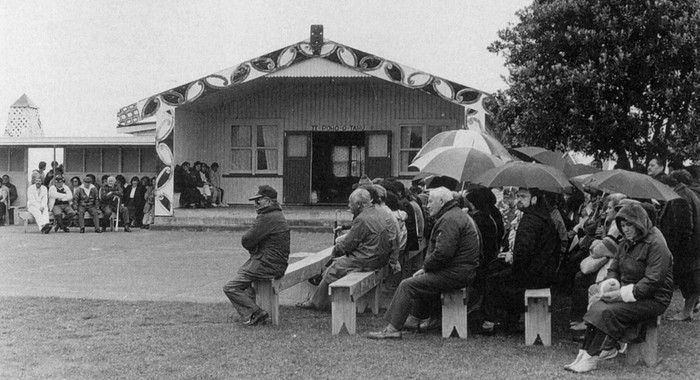
Book launch at Te Poho O Tahu, August 1988. MERE WHAANGA
I have recorded the main stories that adorn our wharenui. Te Poho O Tahu is a declaration of the hap identity of Ngai Tahu Matawhaiti. Each time we repeat a tauparapara or waiata or tell a story, we draw upon the whakapapa, the history, the many and various links with our tpuna. So we keep those links alive, for each naming of waka, iwi, hap, whnau or whenua evokes an entire history.
The book covers three aspects of the krero about Iwitea:
ManaWhakapapa tells of our tpuna, their journeys from Hawaiki to Aotearoa, and such of their lives as we know. We remember these tpuna in the names of our hap and iwi, reinforcing our blood ties by our affiliations with Ngai Tahu Matawhaiti, Ngti Kahungunu and Ngti Rongomaiwahine. To claim membership of these tribal groupings is to declare descent from the tpuna for whom the iwi or hap is named.
ManaWhenua discusses the major landholdings of the people of Iwitea. It is about obligations to as well as authority over the land, and about the way our land tenure system has changed. Included in this section are the stories of major events on our lands, and of the tpuna who were prominent. In particular, the story of our largest landholding, Te Whakaari, is inextricably bound up with that of the prophet Te Kooti.
ManaTangata describes the activities of our people, the stories that are part of our identity, the taonga that our tpuna created, the faiths we have followed, and some of the issues that concern us today. The last four chapters of the book explore some of our peoples work and their ways of expressing cultural identity. The final chapter includes an account of a major issue which arose in 2000. It is a case study of how a hap responded to a perceived threat from an outside agency, and how a resolution was achieved.
I am fortunate to have grown up on Paparatu station, and that my father Te Hore Epanaia Whaanga took me to whi tapu and historical sites. He told me the stories, and in his later years composed waiata that are synopses of those stories and histories. During my term as Fellow in Mori History with the Ministry for Culture and Heritage, I engaged in research that enabled me to build upon that knowledge.
There is much more that could be written about Iwitea, other whakapapa and krero that could be explored. As with all writing projects, some aspects of the history had to be left for future investigation because of time constraints.
I hope that this book will prove informative for those who would like to know more about Ngai Tahu Matawhaiti and the people of Iwitea. Most of all, I hope that the children and future generations of our hap will find in the krero included here something to guide them towards a sense of belonging and pride in our kinga tturu.
Wherever possible, original or published accounts of Mori historians are included. While some of these may appear to repeat previous information, it is important that different versions are available to the reader for purposes of comparison. It has been my experience that debate about differing versions of history is much relished by our kaumtua.
Chapter Two contains a summarised version of an account of the Takitimu waka that the amateur ethnologist S. Percy Smith translated from the writings of H.T. Whatahoro. Scholars in the late twentieth century found that Smith on occasion created his own myths. However, I have included this piece because it is based on the work of a renowned Ngti Kahungunu scholar. A comprehensive study of Whatahoros original manuscripts remains to be undertaken, as does an in-depth comparison and analysis of the work of other early twentieth-century ethnologists who published translations of Whatahoros work.
As waiata were such an important method of recording and passing on information, these often figure prominently in the narrative, particularly those concerning pre-contact history. The four volumes of pirana Ngatas NgaMoteatea contain a wealth of whakapapa and traditional mtauranga. Chapters Two and Three are concluded by sections of NgaMoteatea that are pertinent to the preceding history. In some cases this is an explanation of a name with little other information; there are also quite lengthy explanations of cosmological events.
My overall intention has been to provide an accessible account of the major krero represented by the whakairo of Te Poho O Tahu. The foundation given to me by my father was built on by the waiata belonging to our marae. In this book I have added the results of some years of study, culminating in two years of intense research and writing while I held the Fellowship in Mori History at the Ministry for Culture and Heritage.
My heartfelt thanks go first to the kaumtua of Iwitea who asked me to do this book. It has been at times a tumultuous journey, but I have never doubted the worth of making it.
My thanks, too, to the Ministry for Culture and Heritage, particularly the History Group and other colleagues who made the Fellowship in Mori History possible and my time in Wellington enjoyable. Jock Phillips and Bronwyn Dalley tn krua. Thanks also to Stephen Hamilton and David Green for editing the manuscript and for preparing the index.
To Manuka Henare, particular thanks for the discussions and advice on the manuscript, and your very thought-provoking perspectives. Also to my tuakana Wi Kuki Kaa, heartfelt thanks. My whnau and I took much delight in your commentary and the information and perspectives you shared with us.
Font size:
Interval:
Bookmark:
Similar books «A Carved Cloak for Tahu»
Look at similar books to A Carved Cloak for Tahu. We have selected literature similar in name and meaning in the hope of providing readers with more options to find new, interesting, not yet read works.
Discussion, reviews of the book A Carved Cloak for Tahu and just readers' own opinions. Leave your comments, write what you think about the work, its meaning or the main characters. Specify what exactly you liked and what you didn't like, and why you think so.

